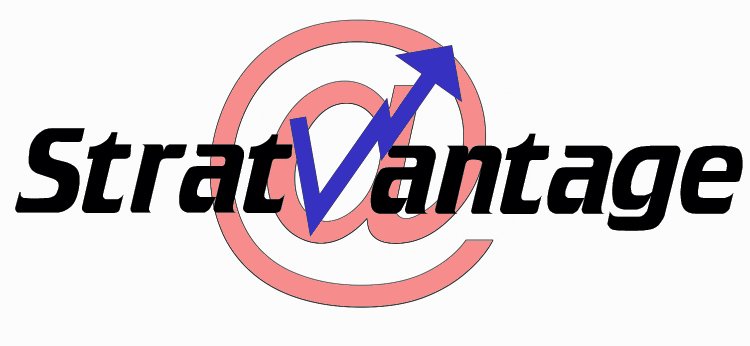Wireless Serendipity
This happened to me the other day, while doing research for the next CTOMentor white paper, on wireless. The paper will be based on one I did for a client in October 2000, and I’m starting to go through it and update the information. What follows is a description of the path I took to answer a simple question: What happened to Ericsson’s cell phone manufacturing business? Along the way I tripped over a few very interesting infonuggets I might not have found had I been looking for them.
It all started when my intern, Jeremy, sent me a link to a ZDNet story on Palm’s integration of Bluetooth capabilities into an add-on card for its PDAs. The story mentions a company called Sony Ericsson. I couldn’t remember what the deal was with this company, although I knew Ericsson had pretty much gotten out of the business of making their own phones. This is a testament to the competitive nature of the cell phone business – Ericsson was the number one cell phone manufacturer not all that long ago, until Nokia ate their lunch.
So to figure out if Sony bought all of Ericsson’s manufacturing business, I go towww.ericsson.com and scan the press releases. Sure enough, there’s a mention of Sony Ericsson and Ericsson banding together on a project: Ericsson’s Instant Messaging and Presence Server (IMPS). Cool. I vaguely remember reading something about this, and Instant Messaging is something I wrote quite a lot about in the CTOMentor P2P white paper.
The IMPS is built upon the Wireless Village version 1.0 specification and the companies claim it “will provide network operators with an advanced personal communication tool for users that can deploy to 2G, 2.5G and 3G networks worldwide. The new instant messaging solution, which also works with legacy handsets, is to be announced by Ericsson in the upcoming months.”
I’ve never heard of Wireless Village, but the press release describes it: “Founded by Ericsson, Motorola, and Nokia, Wireless Village, the Mobile Instant Messaging and Presence Services (IMPS) Initiative, was formed in April 2001 to define and promote a set of universal specifications for mobile instant messaging and presence services.”
This sounds like an important initiative, so I check out the Wireless Village Web site.Turns out they just recently launched their 1.0 specification. Also on the site is a white paper, which quotes ResearchPortal.com: “Research Portal.com reports instant messaging is the Number Two requested application after voice. With the monumental growth patterns of SMS, where 10 billion messages are sent every month globally according to the GSM Association, and the adoption rate of desktop instant messaging (IM), with over 100 million registered users and over 50 million regular users as reported by Jupiter Media Metrix, we foresee that wireless IMPS will capitalize on both these trends.”
Hey! That’s the same ResearchPortal survey I quote in my earlier white paper: “Surprisingly, instant messaging (which we imagine includes paging functions) was the most desired feature by mobile professionals. Equally surprising was the fact that consumers rated both messaging and email more highly than did the professionals. Understandably, professionals ranked the ability to manage Personal Information Manager (PIM) data higher than did consumers.” The study thus has to be about two years old, then. There’s no stat like an old stat.
 Nonetheless, the Ericsson/Sony Ericsson/Wireless Village initiative combined with the fact that VoiceStream is offering access to AOL Instant Messenger on its phones means I’d better talk a lot more about wireless IM in the next white paper.
Nonetheless, the Ericsson/Sony Ericsson/Wireless Village initiative combined with the fact that VoiceStream is offering access to AOL Instant Messenger on its phones means I’d better talk a lot more about wireless IM in the next white paper.
Getting back to the original questions (What happened to Ericsson’s manufacturing and who is Sony Ericsson?) I dump “Sony Ericsson” into Google, and come up with their Web site. In the “About us” section, it says: “Sony Ericsson Mobile Communications was established in 2001 by telecommunications leader Ericsson and consumer electronics powerhouse Sony Corporation. The company is equally owned by Ericsson and Sony, whose combined mobile phone businesses on a pro-forma basis achieved annual unit sales of approximately 50 million units and sales of USD 7.2 billion in 2000.”
Plugging “Sony Ericsson” into ZDNet’s search yields an interesting article: Old Atari games will run on cell phones. In case you have never heard of Atari, they were the king of video games in the ’70s, originating the classics Asteroids and the world’s first video game, Pong, both of which will be available to play on Sony Ericsson cell phones.
I still want to know if Sony got all of Ericsson’s manufacturing business, so I plug “cell phone manufacturer” into ZDNet’s search. And finally, I get the payoff: Ericsson is licensing its technology to other cell phone makers, including LG Electronics and Samsung, and “Ericsson Mobile Platforms, based in Sweden, will stay within the Ericsson group when the company merges its handset operations with the mobile-phone unit of Japan’s consumer-electronics group Sony on Oct. 1 [2001].”
Arguably I could have answered my question by finding Sony Ericsson’s site in the first place, but where’s the fun in that? Besides, I found several other interesting pieces of information along the way, including the fact that folks are still relying on a survey of cell phone users that must be at least two years old.
So, two important points for those doing research on the Web: serendipity, within reason, can provide surprisingly pertinent results; and don’t believe stats asserted without citations – things have a way of taking on a life of their own on the Web.
Briefly Noted
-
Shameless Self-Promotion Dept.: Take our survey on corporate policies on home use of network resources.
StratVantage has launched a new service, CTOMentor™, designed to allow Chief Technology Officers and other technical leaders to get rid of the Guilt Stack, that pile of magazines you’ll get around to reading someday.
CTOMentor is a subscription advisory service tailored to customers’ industry and personal information needs. Four times a year CTOMentor provides a four-hour briefing for subscribers and their staffs on the most important emerging technology trends that could affect their businesses. As part of the service, subscribers also get a weekly email newsletter, Just the Right Stuff™, containing links to the Top 10 Must Read articles needed to stay current. These and other CTOMentor services will let you Your Inbox™.
As part of its launch, CTOMentor is offering a two-part white paper on peer-to-peer technology: Peer-to-Peer Computing and Business Networks: More Than Meets the Ear. Part 1, What is P2P?, is available for free on the CTOMentor Web site. Part 2, How Are Businesses Using P2P?, is available for $50.
CTOMentor
- What’s the Deal with Number Searches? I use Atomz’ free site indexing service to provide search facilities on both the StratVantage and theCTOMentor Web sites. A nice feature of the service is the summary email they send each week detailing what users were searching for.I get the usual off-topic search keywords, for the most part – searches for sex, sluts, Excel password cracks. But this week’s report has me scratching my head. There were three searches for “23569 26519 27494 29579” and one for “35910 35910 40857.” I plugged these phases into Google and came up with nothing, but when I tried them individually, I turned up some pages from Taiwan.It seems that various Taiwanese (Chinese?) characters are represented in HTML by referring to an extended character set thusly: 少, 林, and so on. When these characters are used in the title of a page, they aren’t parsed. For example, a page entitled “¤p¬õ¨§ªº·tÅʦP·ù·|” (or the Taiwanese equivalent) shows in the title bar as “小 紅 豆 的 暗 戀 同 盟 會.” So my best guess is that I had some Chinese visitors. Wonder what they were looking for?
Azuki
- Yahoo!/ACNielsen Internet Confidence Index Declines: My old employer, ACNielsen, has partnered with Yahoo! to create this quarterly study of confidence in the Internet. ACNielsen uses CATI Omnibus methodology (I don’t know what that is, either), utilizing a sample size of 1,000 adults, who may or may not be currently utilizing the Internet. For the First Quarter 2002, the Index dropped to 111, four points off the fourth quarter of 2001. The companies claim the slight decline was driven primarily by heavy Internet users who are less confident with online order fulfillment. The Index is still higher than both the second and third quarter levels in 2001 and indicates that more people intend to shop online during the second quarter of 2002. The projected $13.8 billion spend in the second quarter is slightly less than first quarter projections. More than 40 percent of users manage some aspect of their personal finances online, while 26 percent intend to use the Web for tax research this year.
Yahoo! - Spoofed MP3s Pose Danger: Finjan Software reports that miscreants are embedding URLs in spoofed multimedia files (such as .MP3 and .WAV). Although the files may have the proper extension, they don’t have the proper format, and can be used to “hijack” users to malicious Web sites when users click on MP3 or WAV files. For example, an .MP3 file may really be another file type, such as a .AFX file, which may contain a URL. Worse yet, Internet applications such as Internet Explorer or Outlook may even open such files without asking the user what to do. Since the spoofed file extension is considered “safe,” some multimedia applications open the files despite the difference between the file type (for example, AFX) and the spoofed file extension (for example, WAV). According to Finjan, some pornographic Web sites are already using this technique.
Finjan - Microsoft Readying Converged Phones:
 Alert SNS Reader Larry Kuhn notes that even cooler phones are on the way. Microsoft’s SmartPhone effort will produce phones that feature Pocket Outlook, Pocket Internet Explorer, MSN Messenger and Windows Media Player. Microsoft and VoiceStream recently announced plans to bring Microsoft® Windows® Powered Pocket PC 2002 Phone Edition-based devices to customers later this year for use over VoiceStream’s high-speed GSM/GPRS (Global System for Mobile/General Packet Radio Service) wireless voice and data network. The announcement seemed to indicate that the phones would also have built-in 802.11b (WiFi) connectivity, for use with VoiceStream’s 650 public WiFi locations.The software giant also recently inked a deal with FedEx, which will use the Pocket PC operating system for a new mobile scanner and package-tracking device called the PowerPad. FedEx selected AT&T Wireless’ GPRS data network to support new, high-bandwidth applications on the device, which will be used by its 40,000 couriers.
Alert SNS Reader Larry Kuhn notes that even cooler phones are on the way. Microsoft’s SmartPhone effort will produce phones that feature Pocket Outlook, Pocket Internet Explorer, MSN Messenger and Windows Media Player. Microsoft and VoiceStream recently announced plans to bring Microsoft® Windows® Powered Pocket PC 2002 Phone Edition-based devices to customers later this year for use over VoiceStream’s high-speed GSM/GPRS (Global System for Mobile/General Packet Radio Service) wireless voice and data network. The announcement seemed to indicate that the phones would also have built-in 802.11b (WiFi) connectivity, for use with VoiceStream’s 650 public WiFi locations.The software giant also recently inked a deal with FedEx, which will use the Pocket PC operating system for a new mobile scanner and package-tracking device called the PowerPad. FedEx selected AT&T Wireless’ GPRS data network to support new, high-bandwidth applications on the device, which will be used by its 40,000 couriers.
Microsoft

